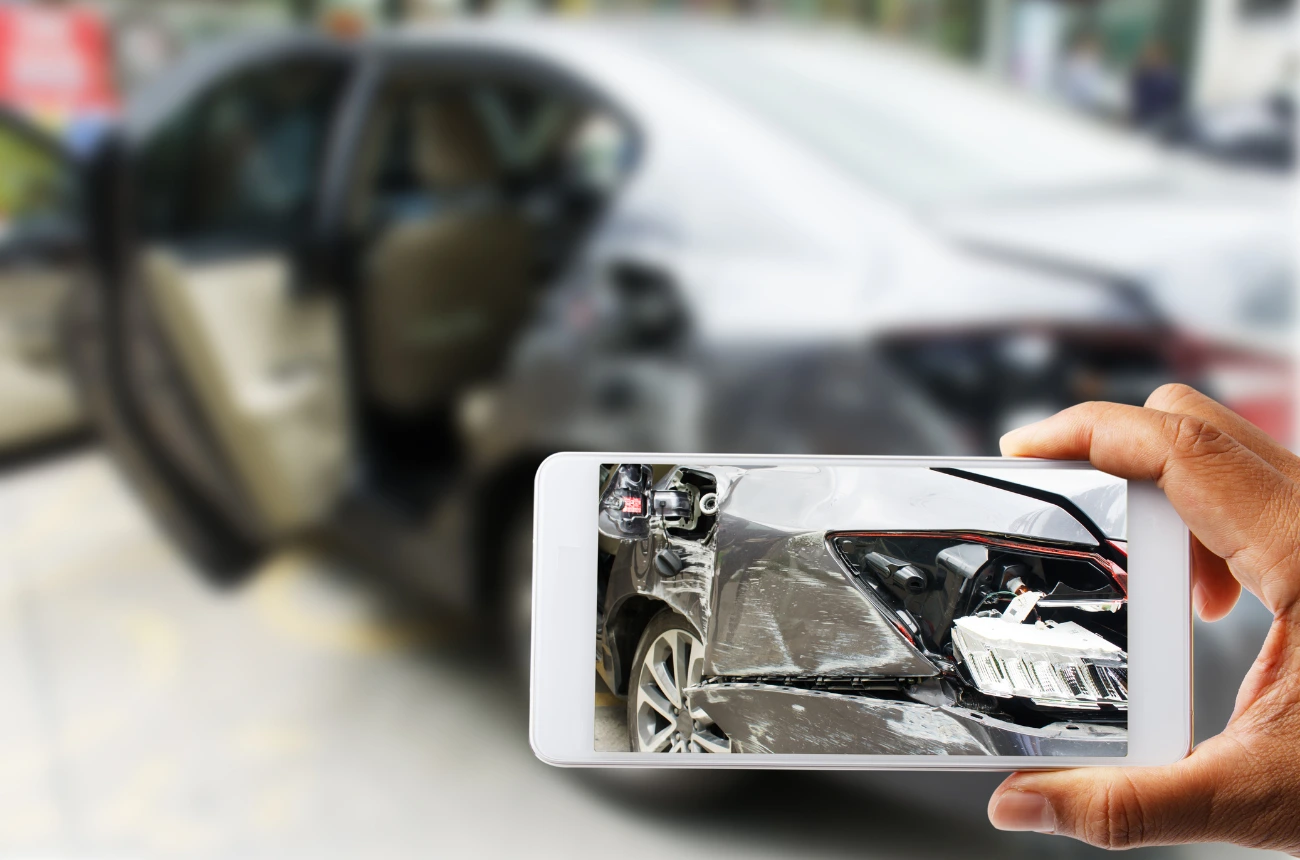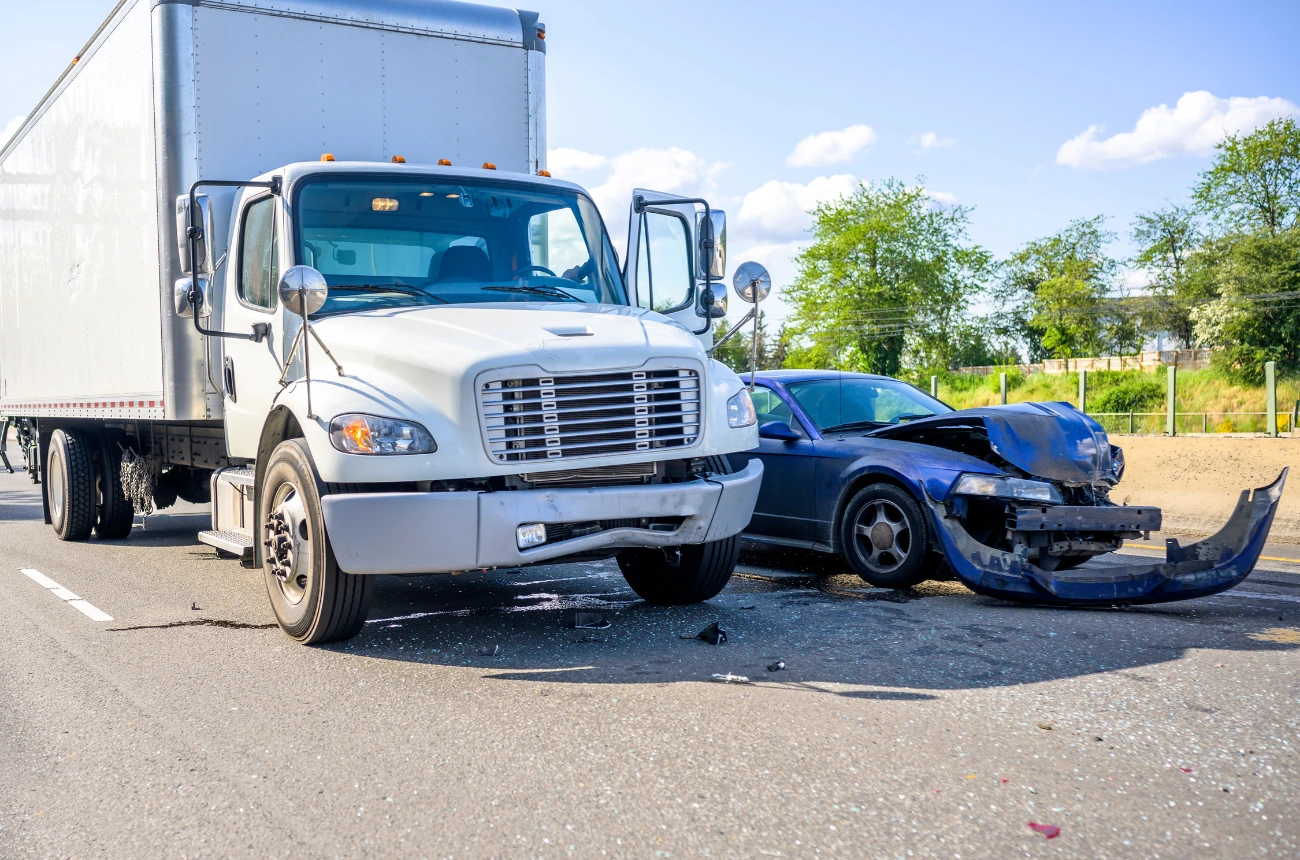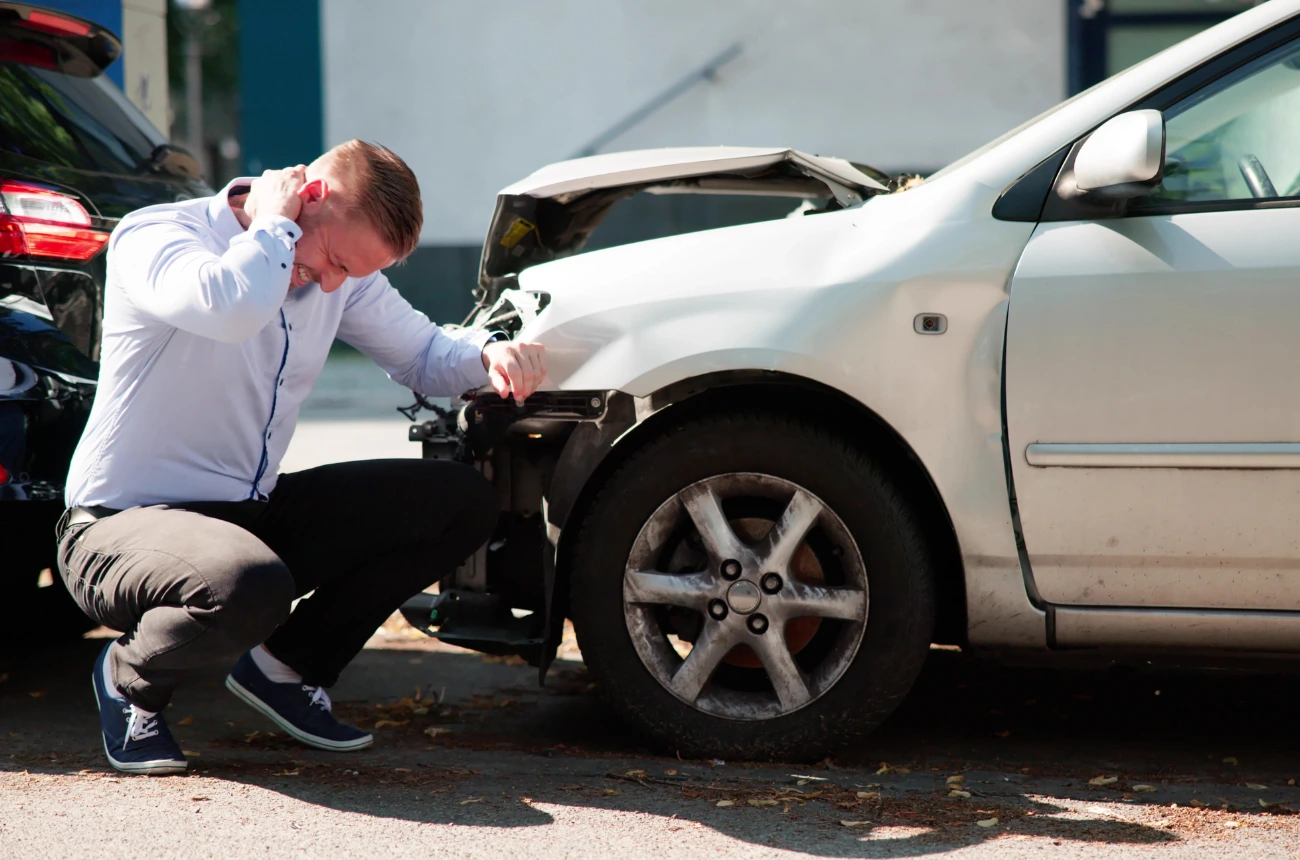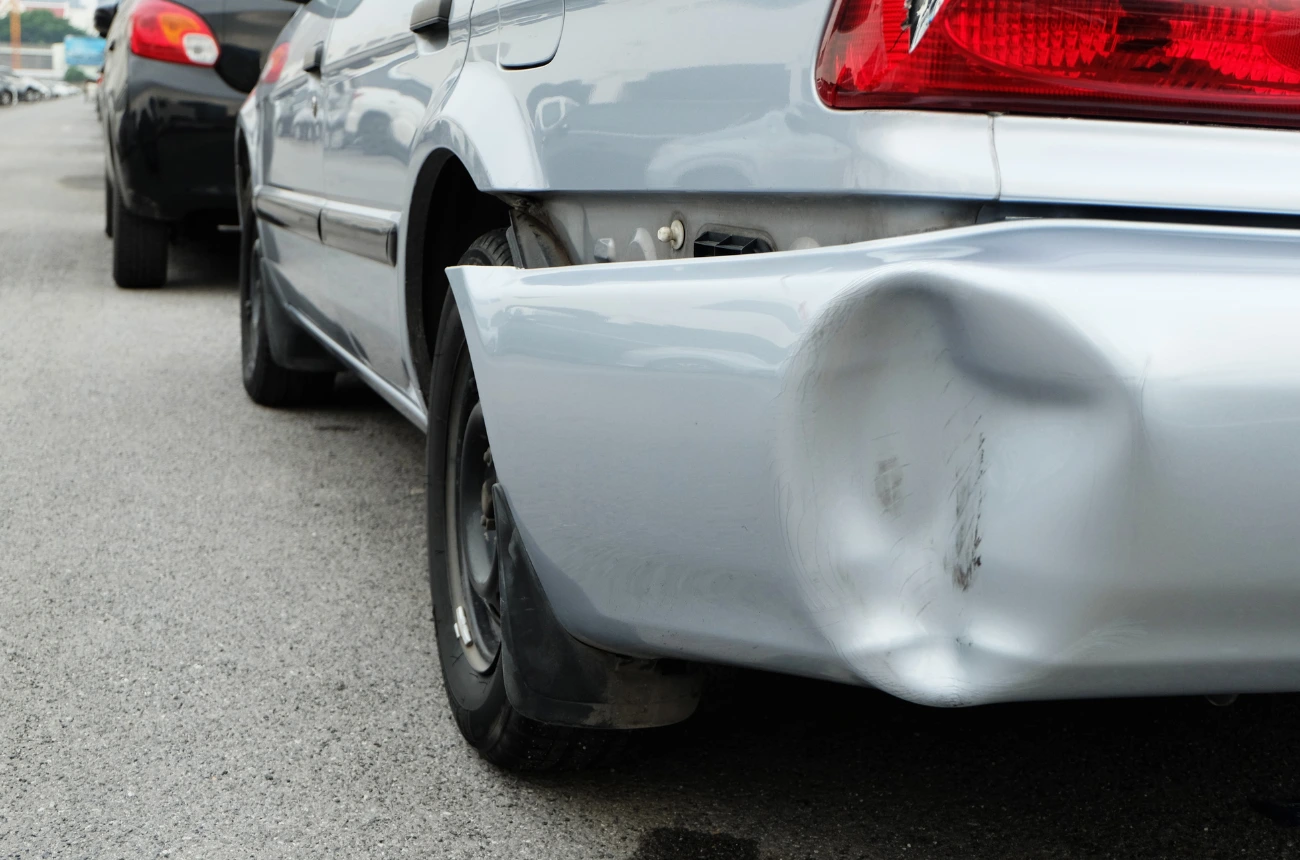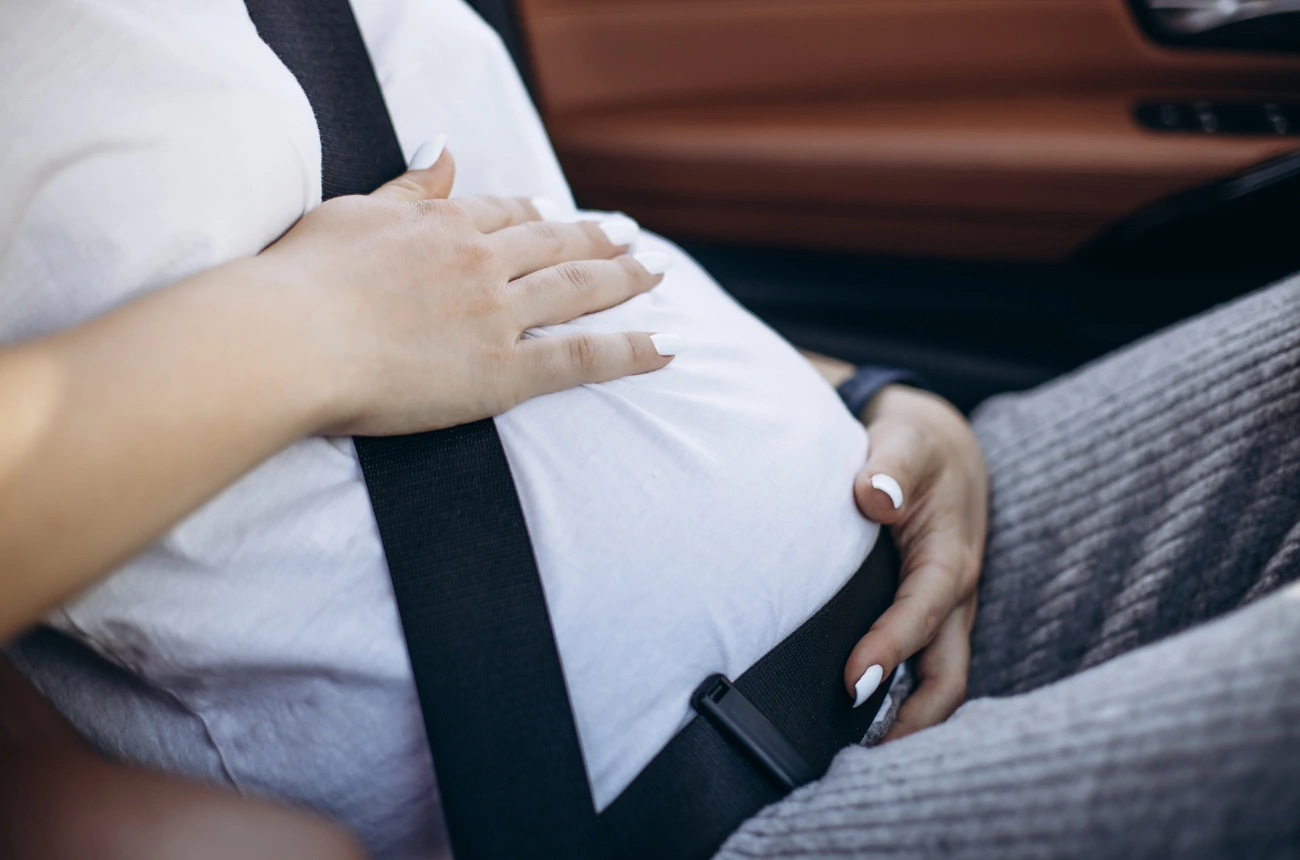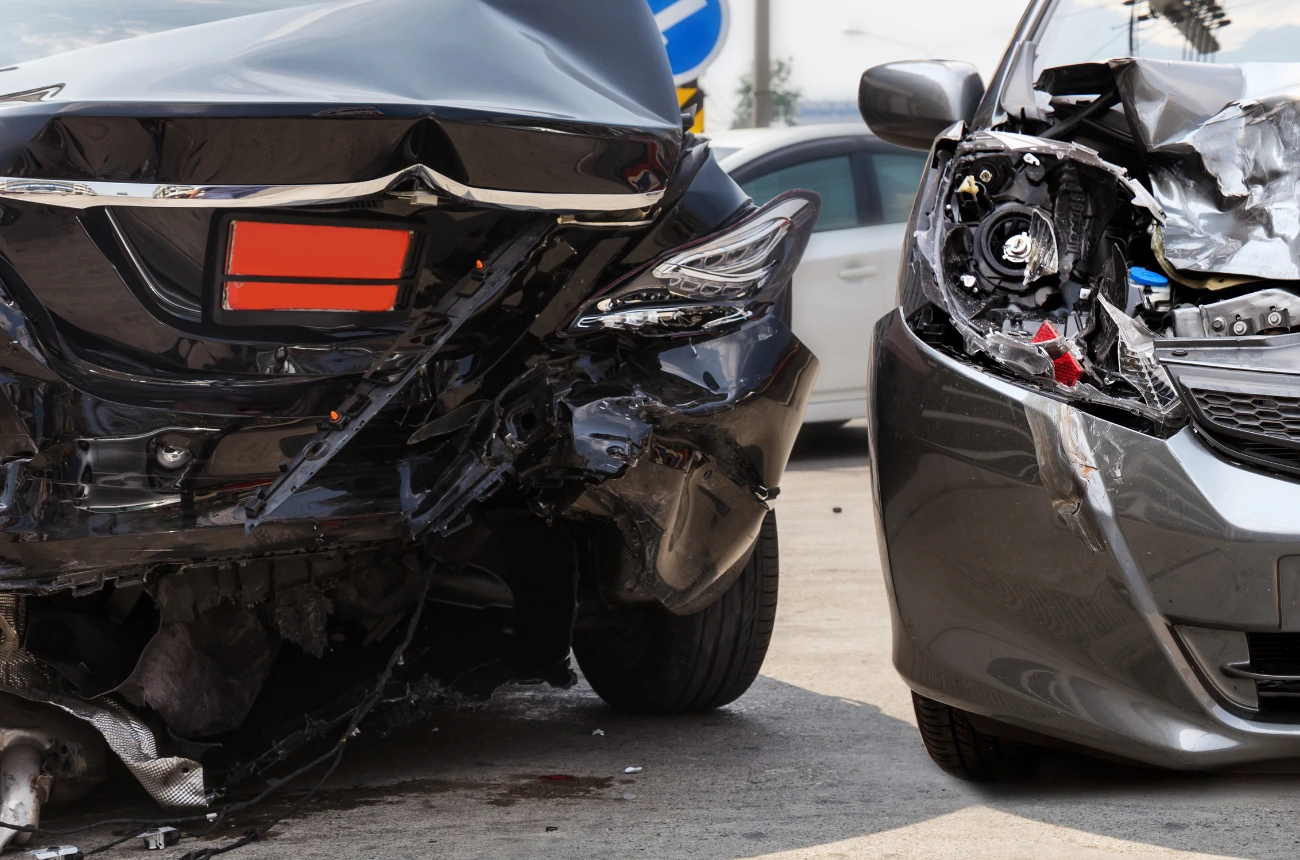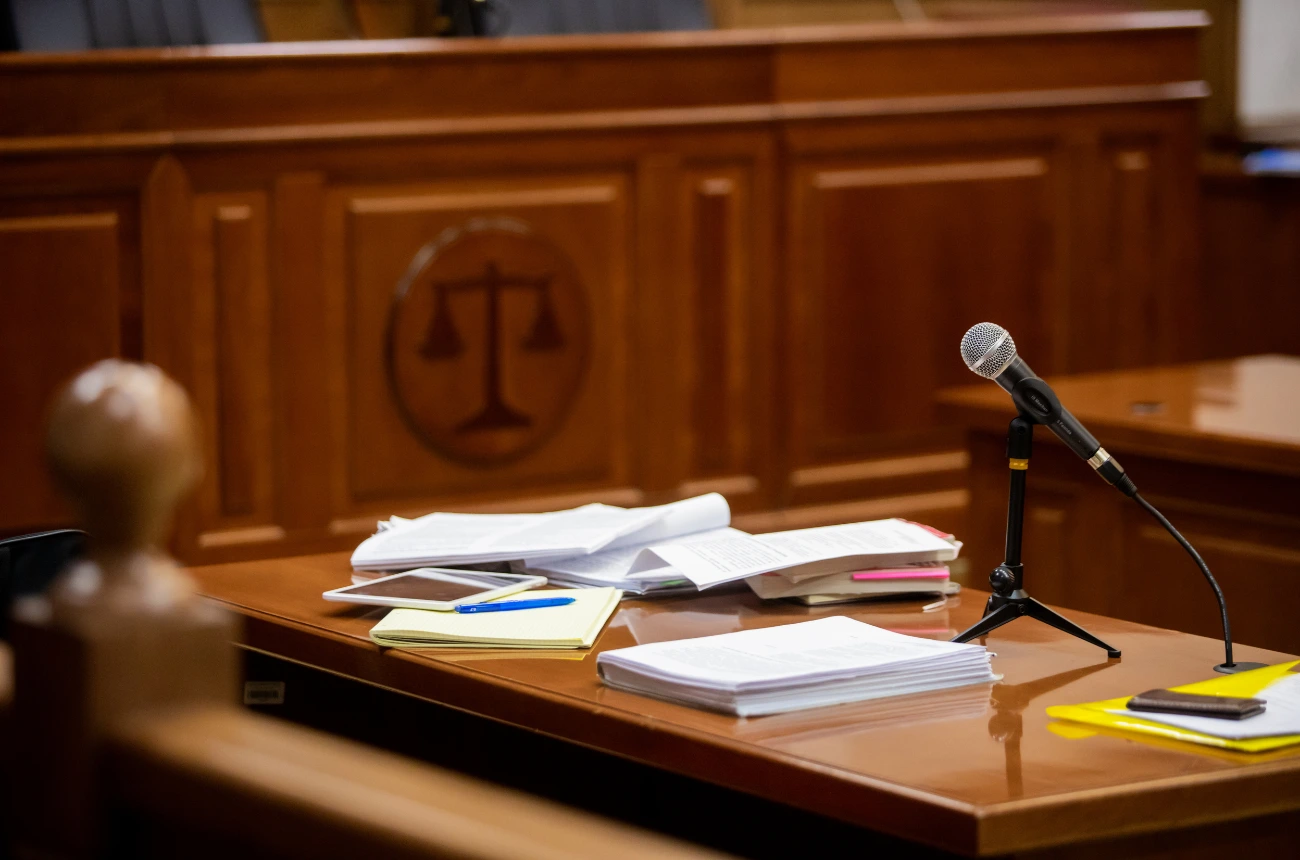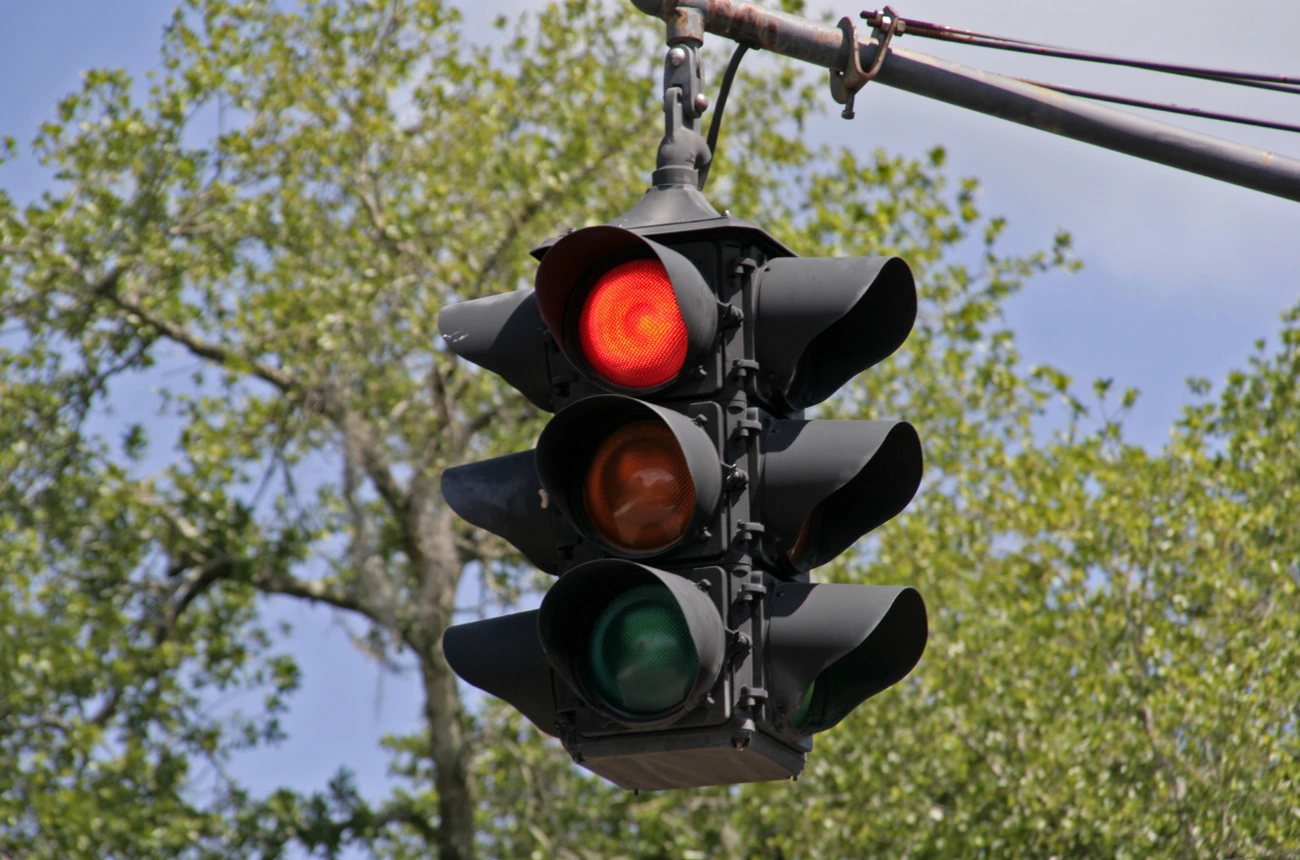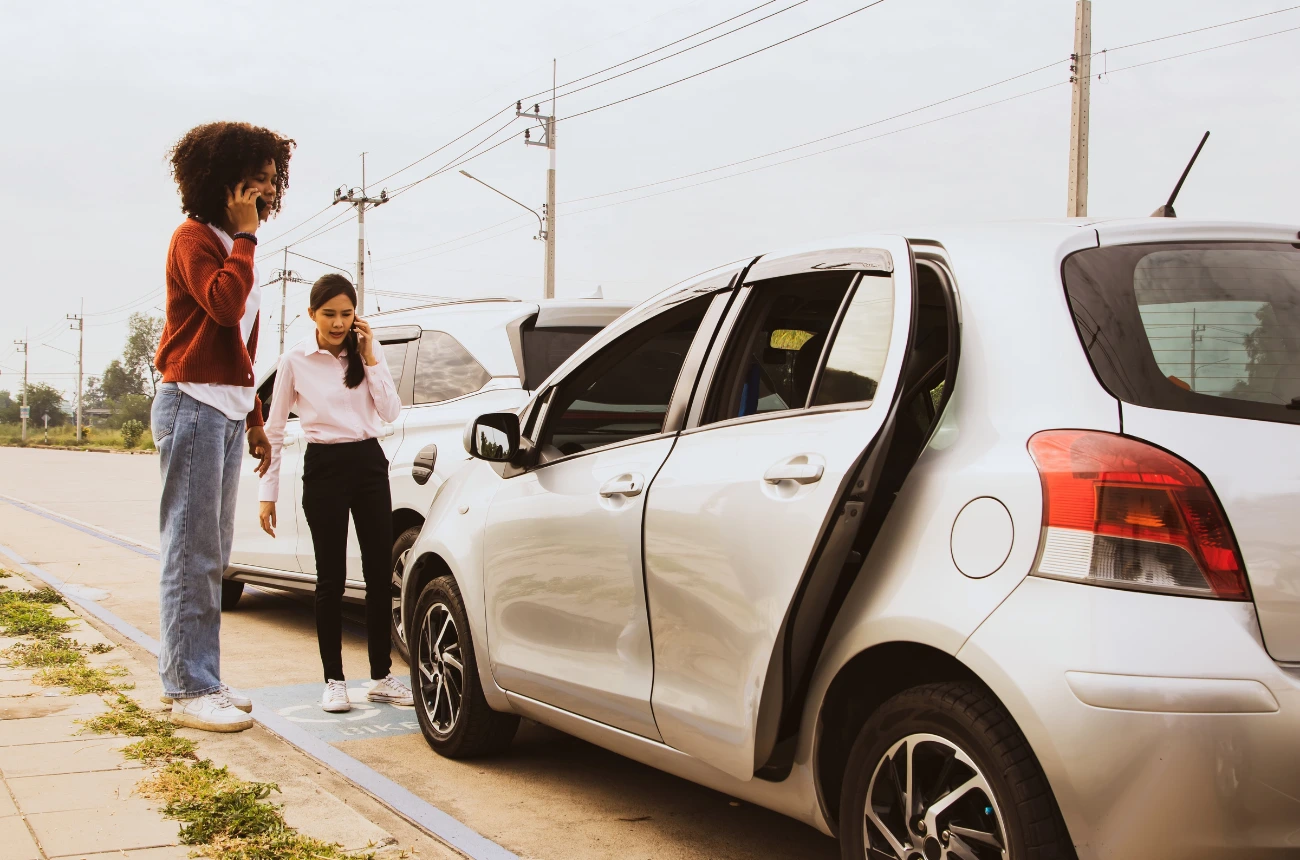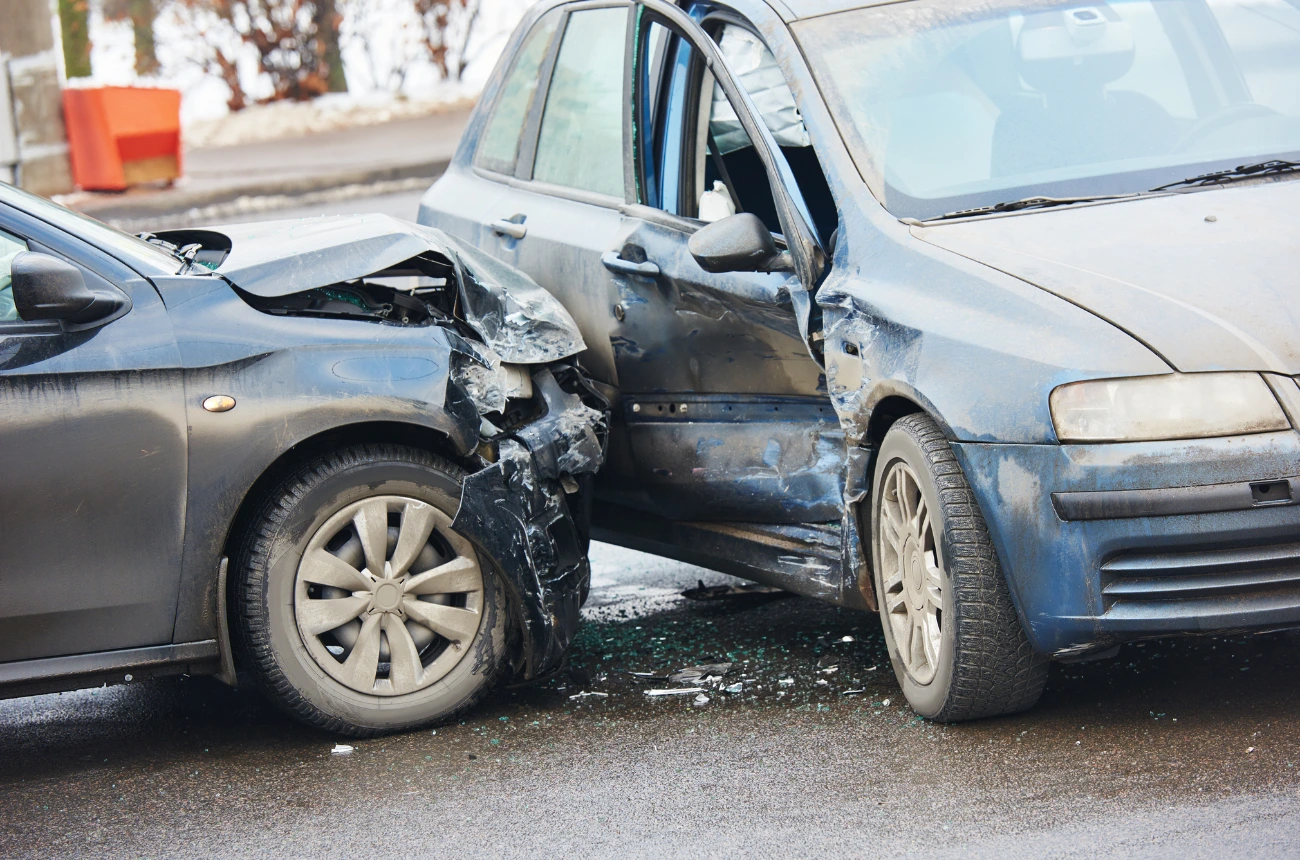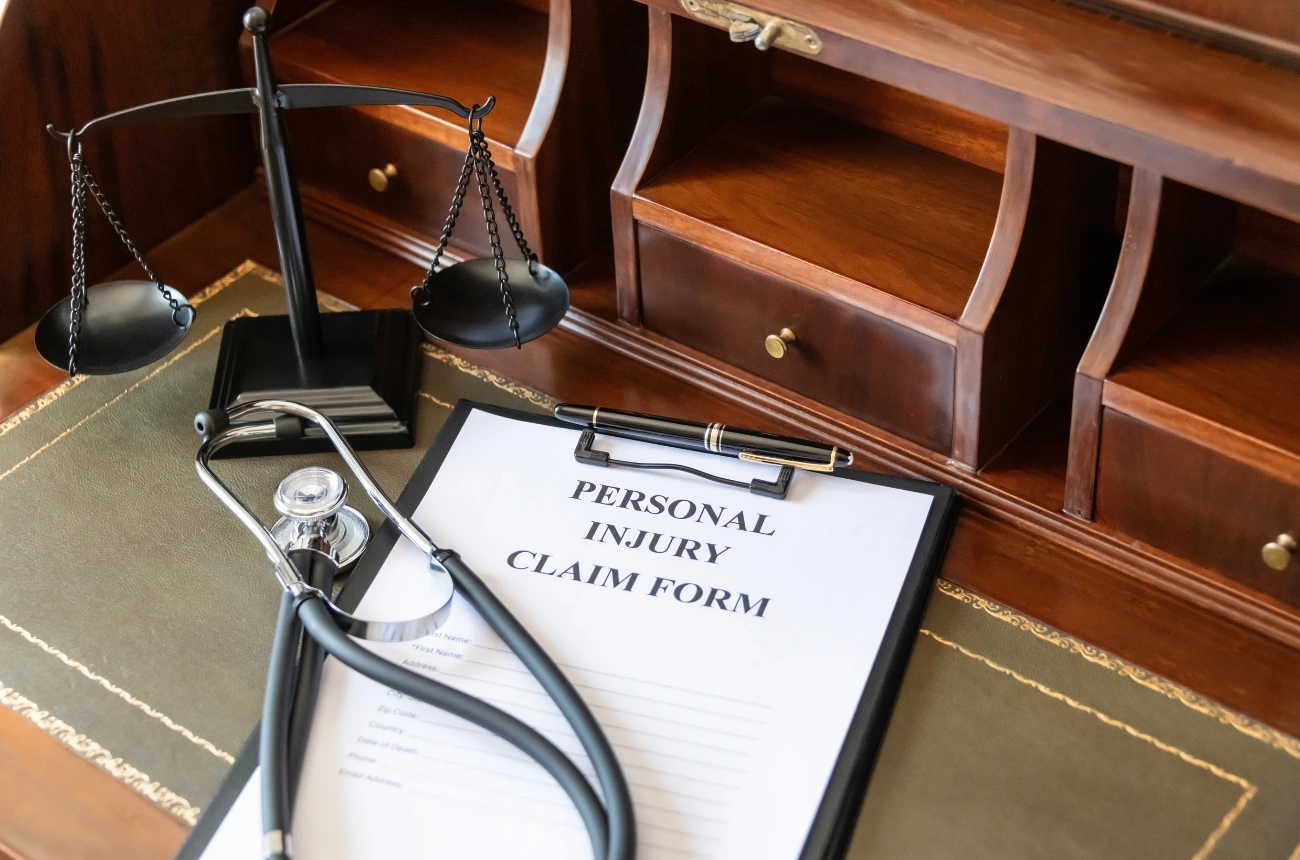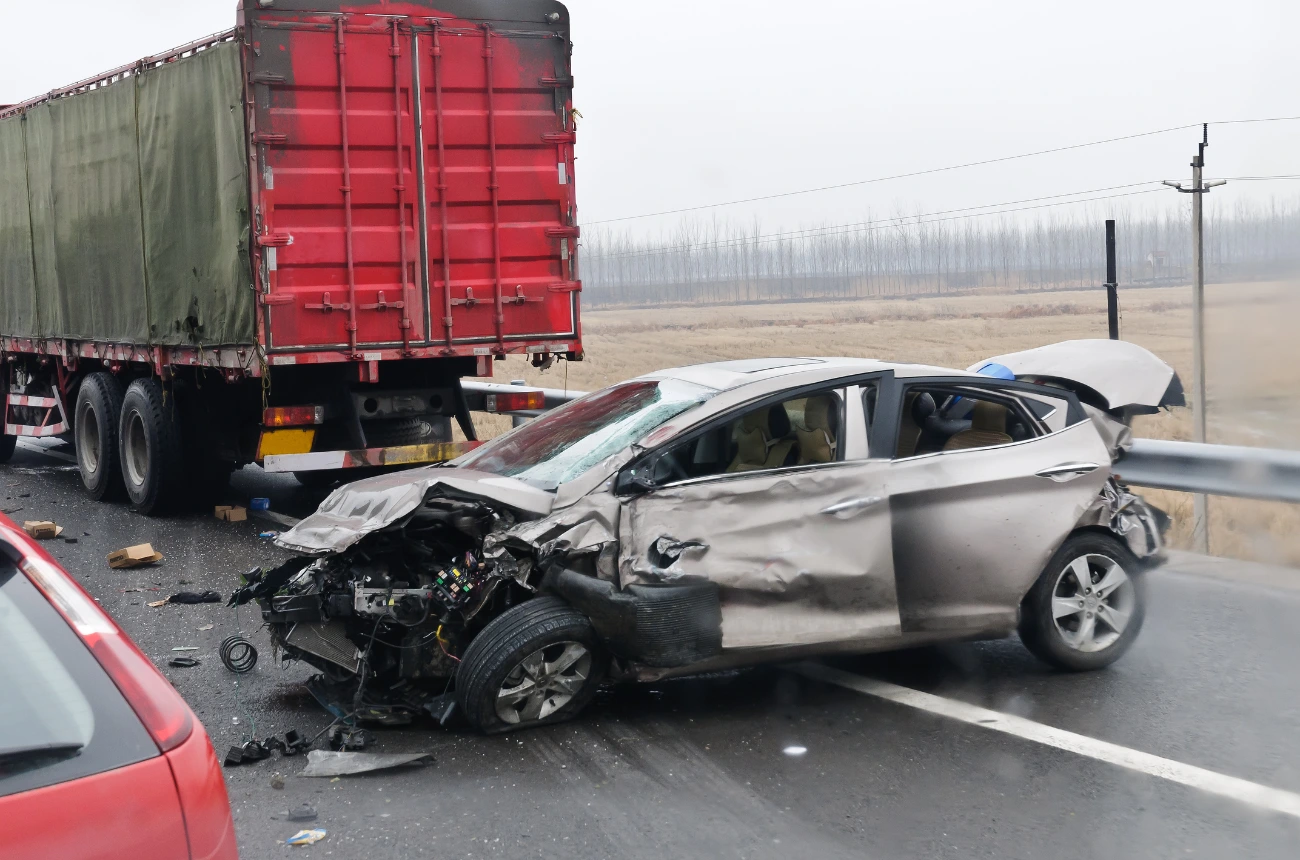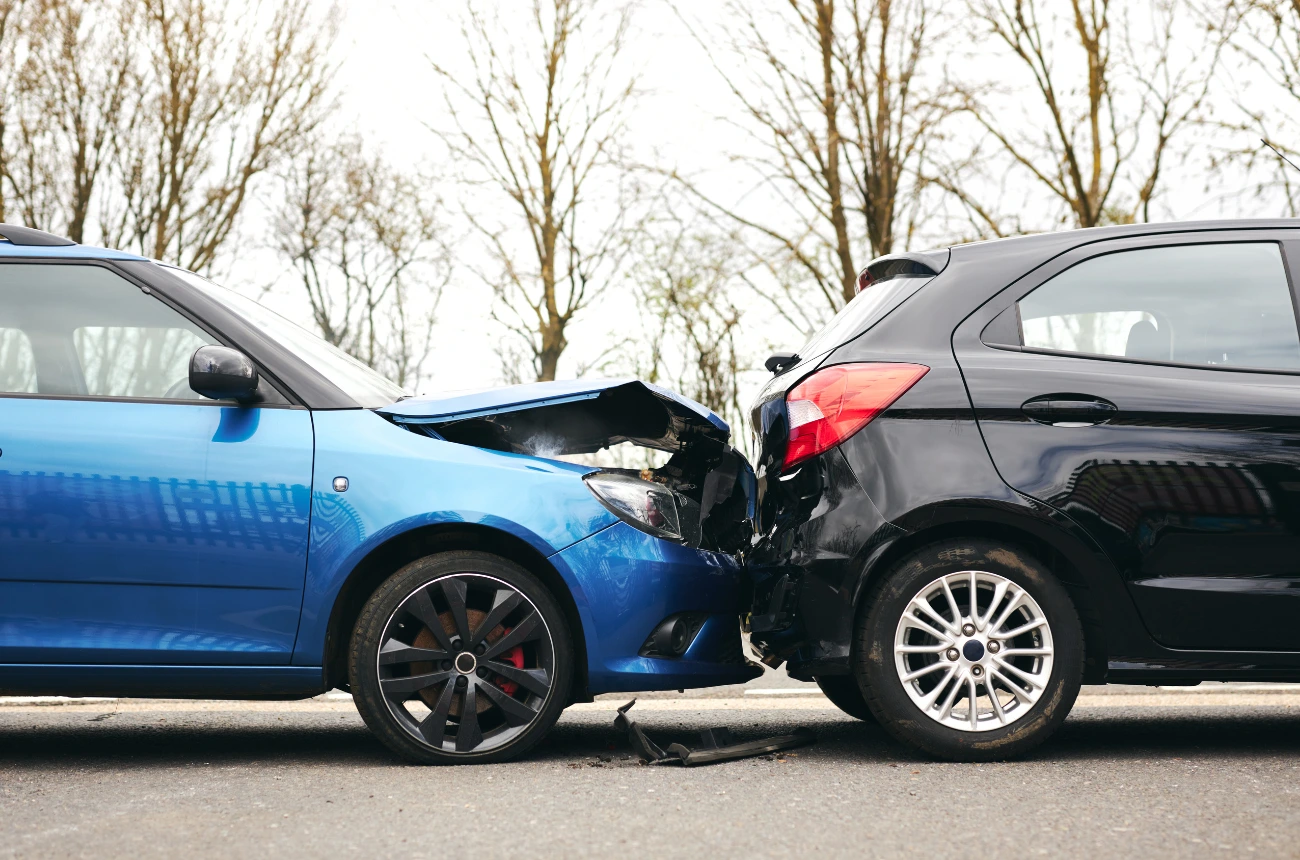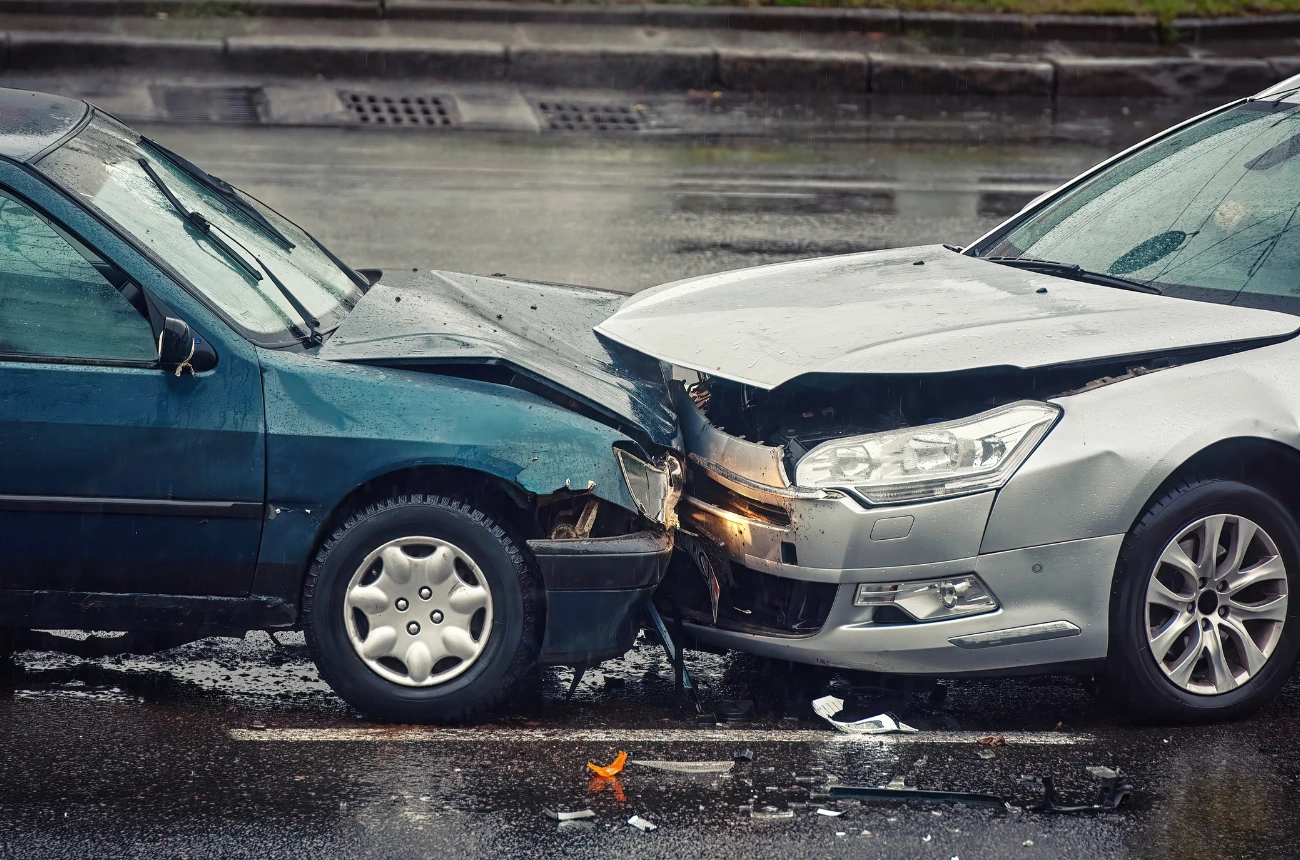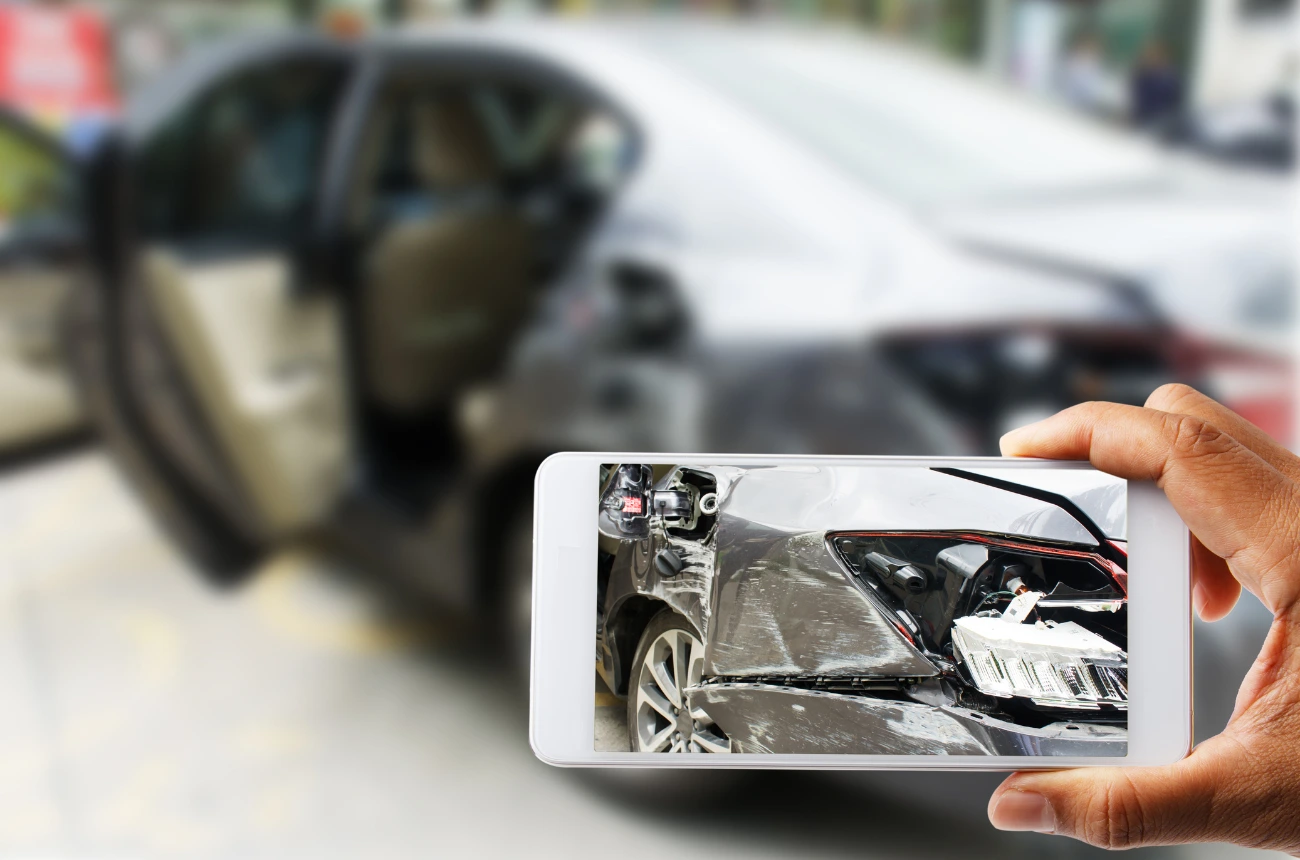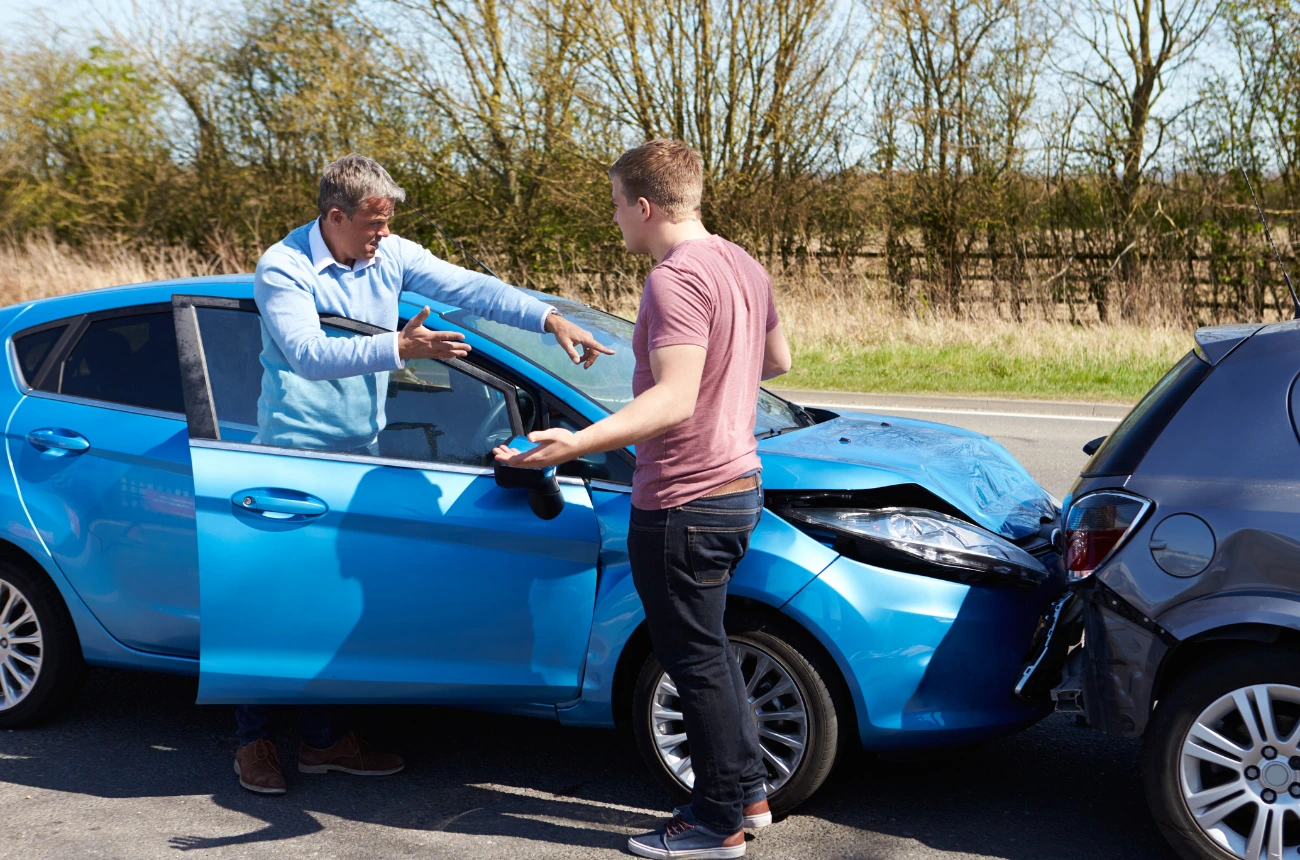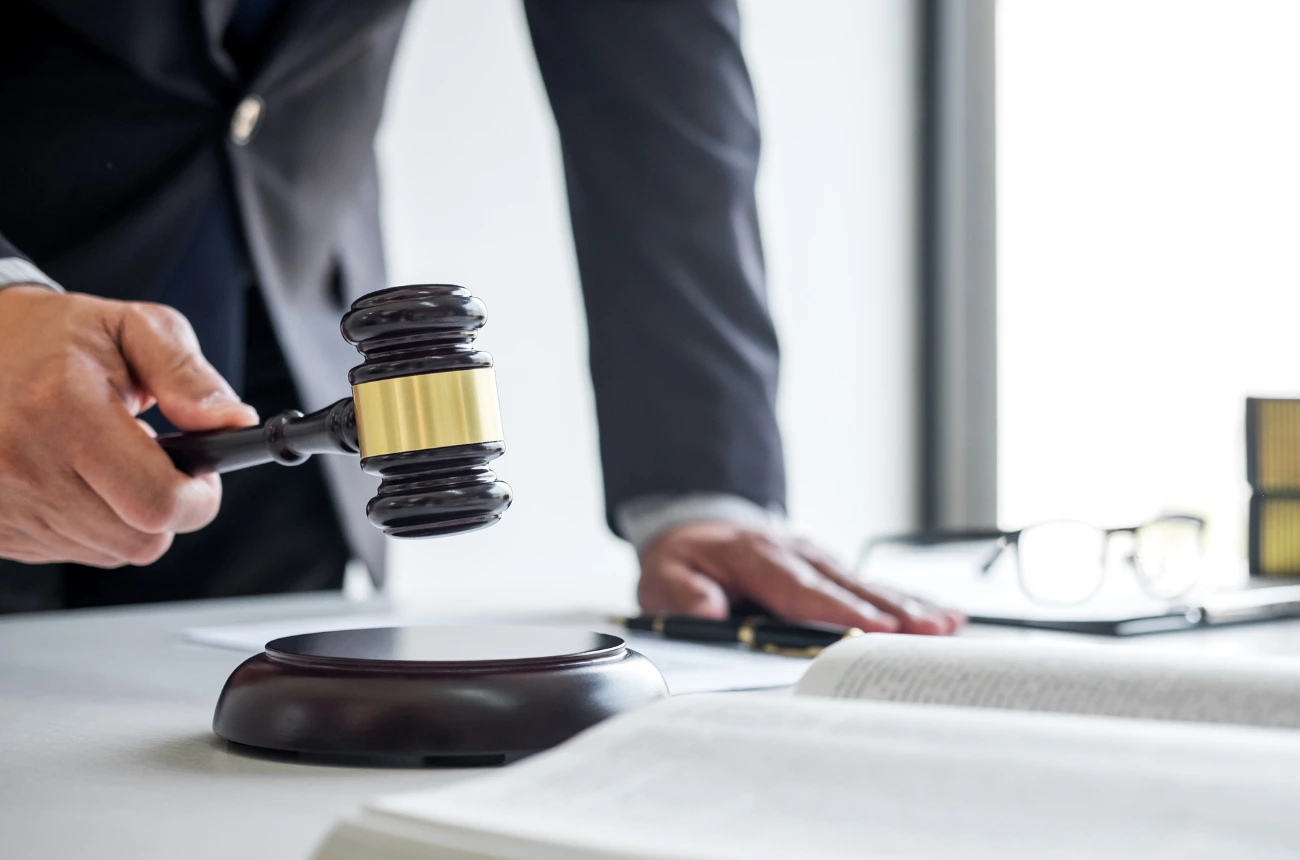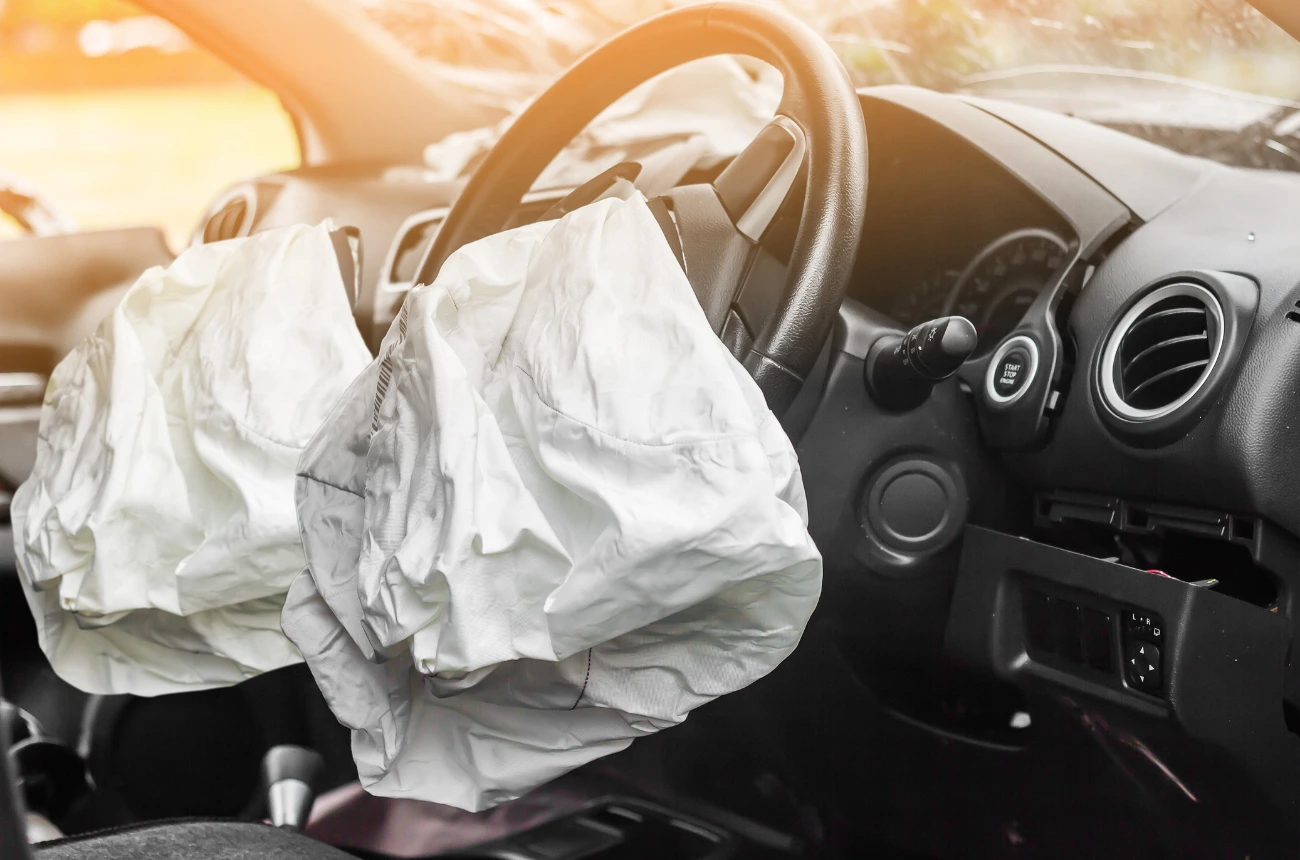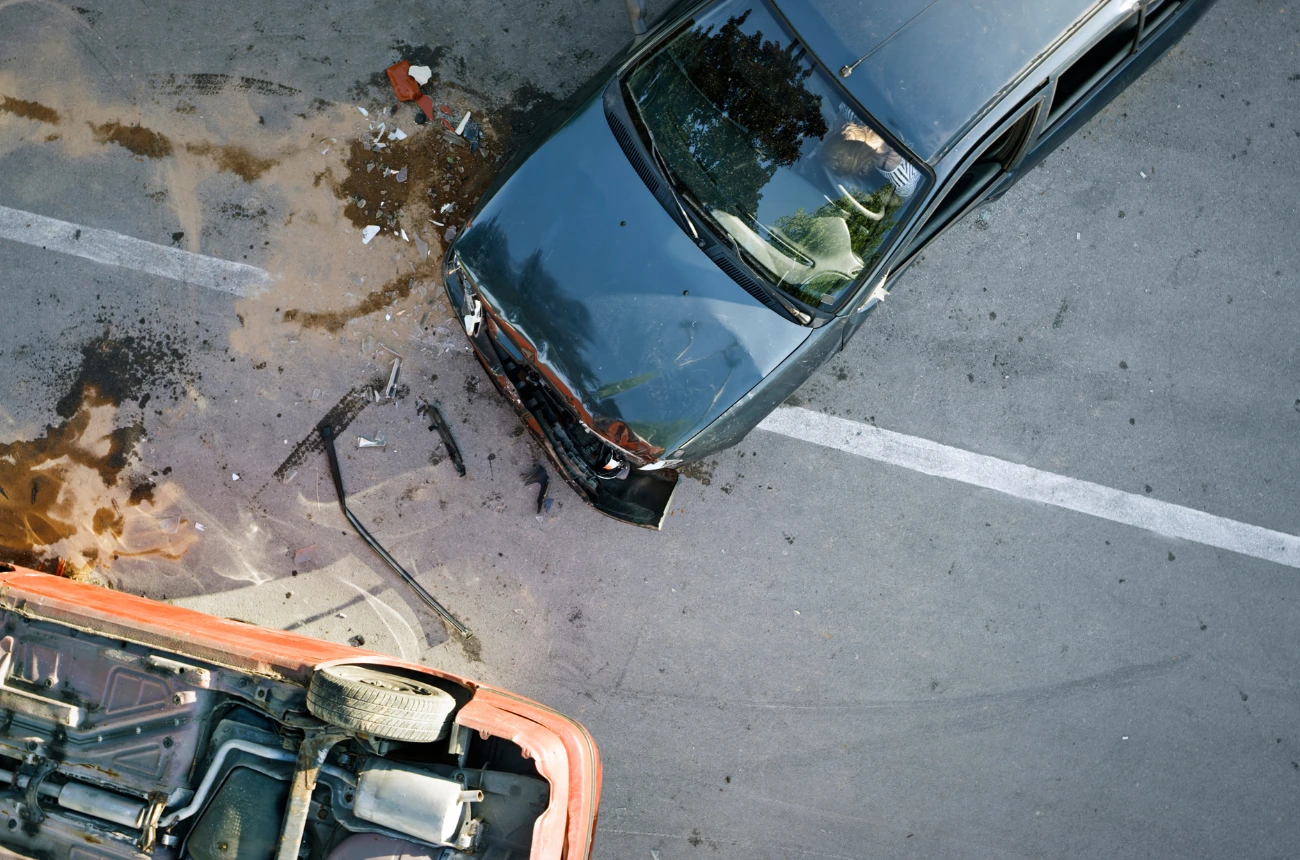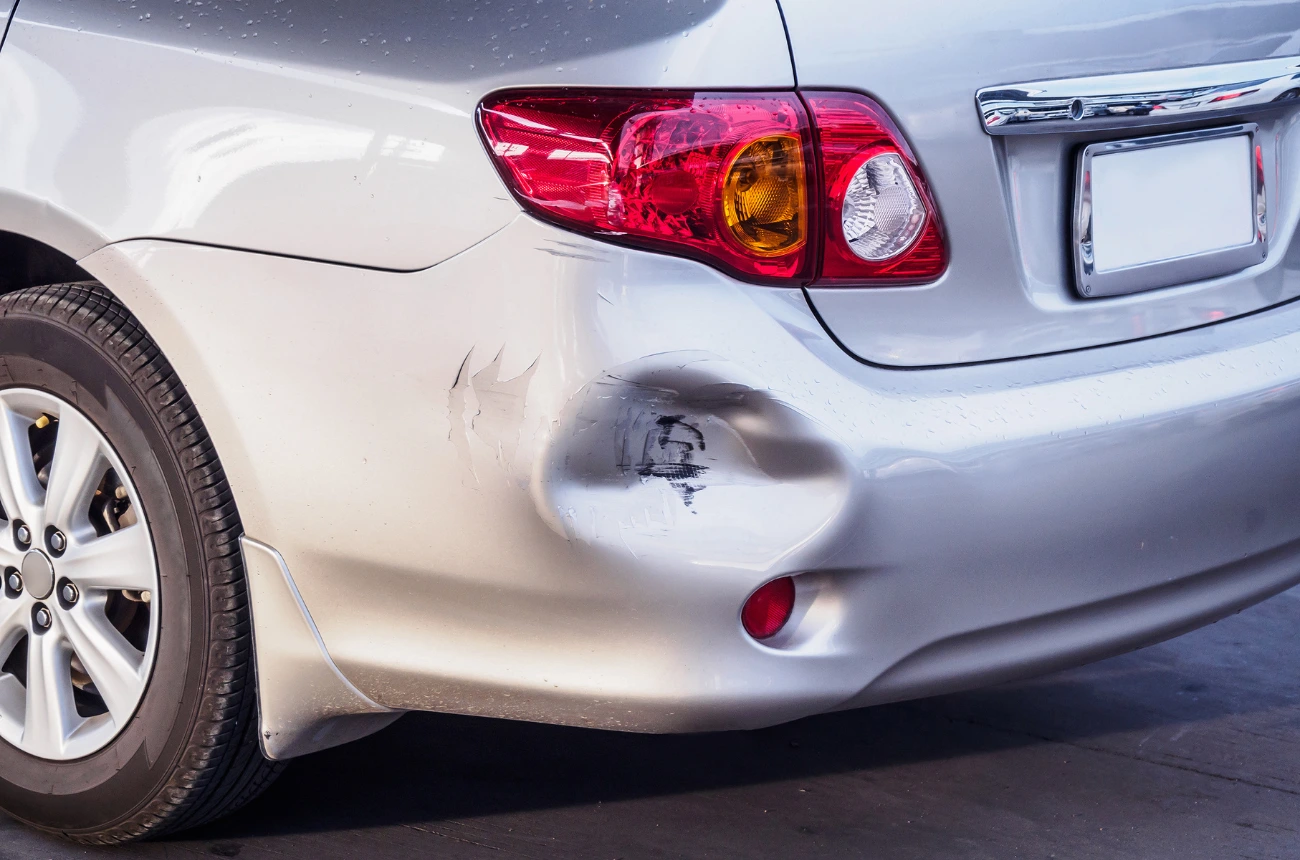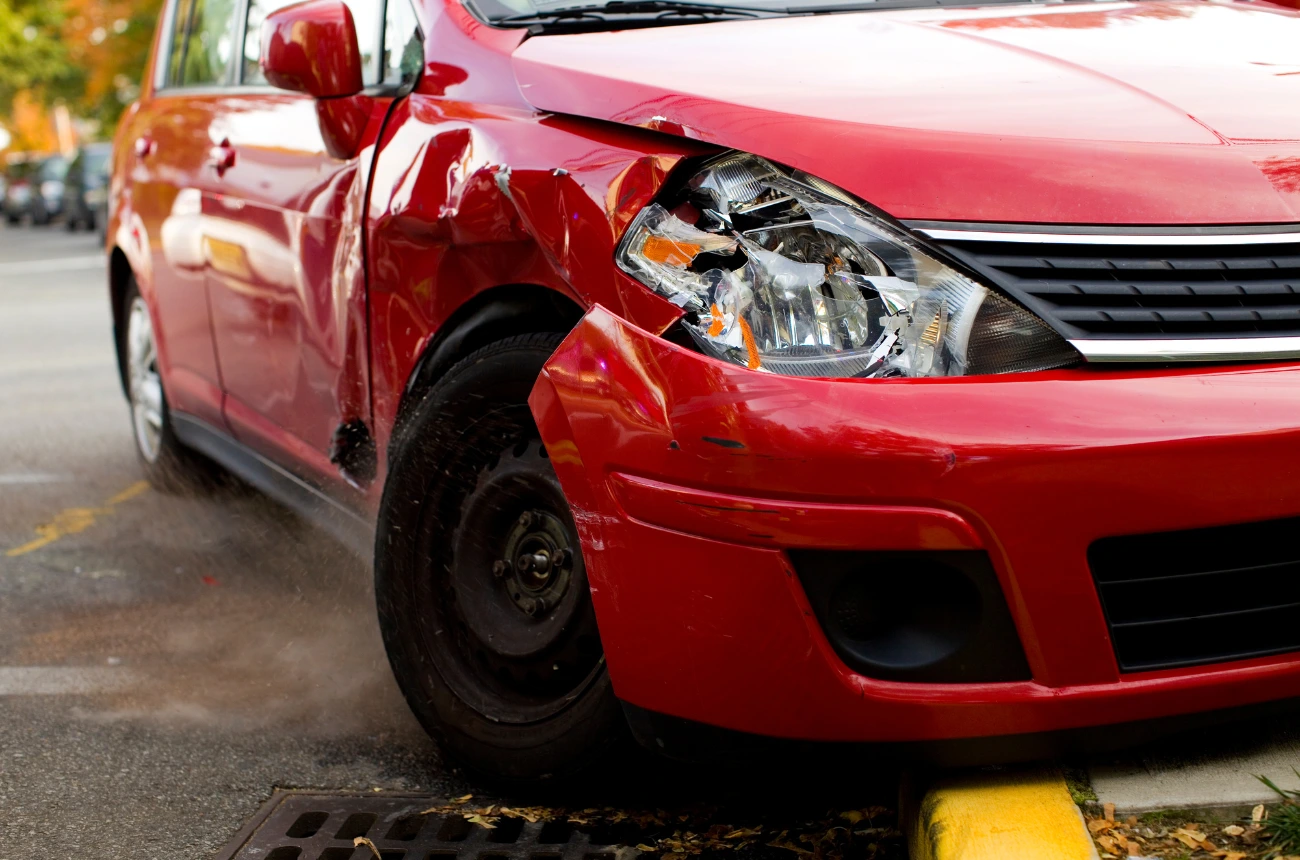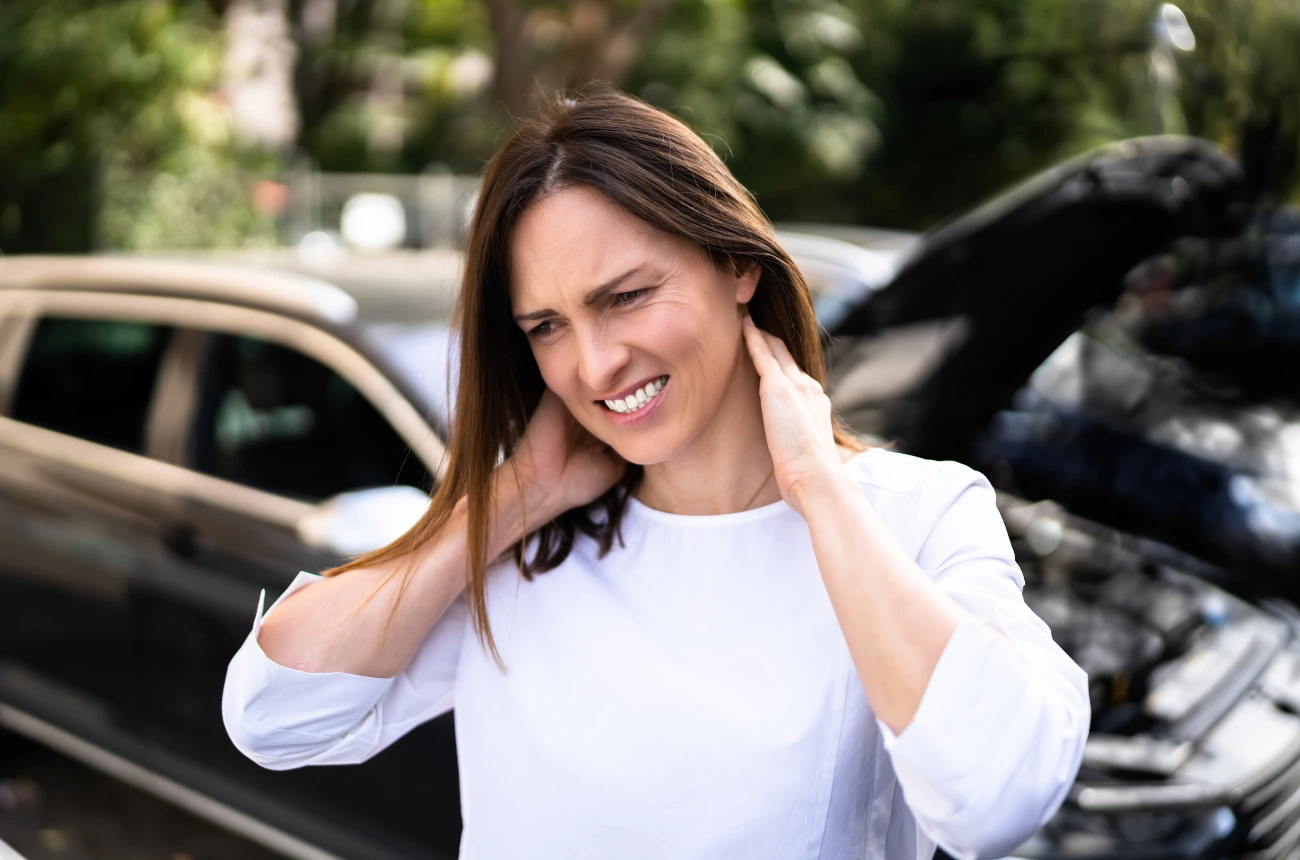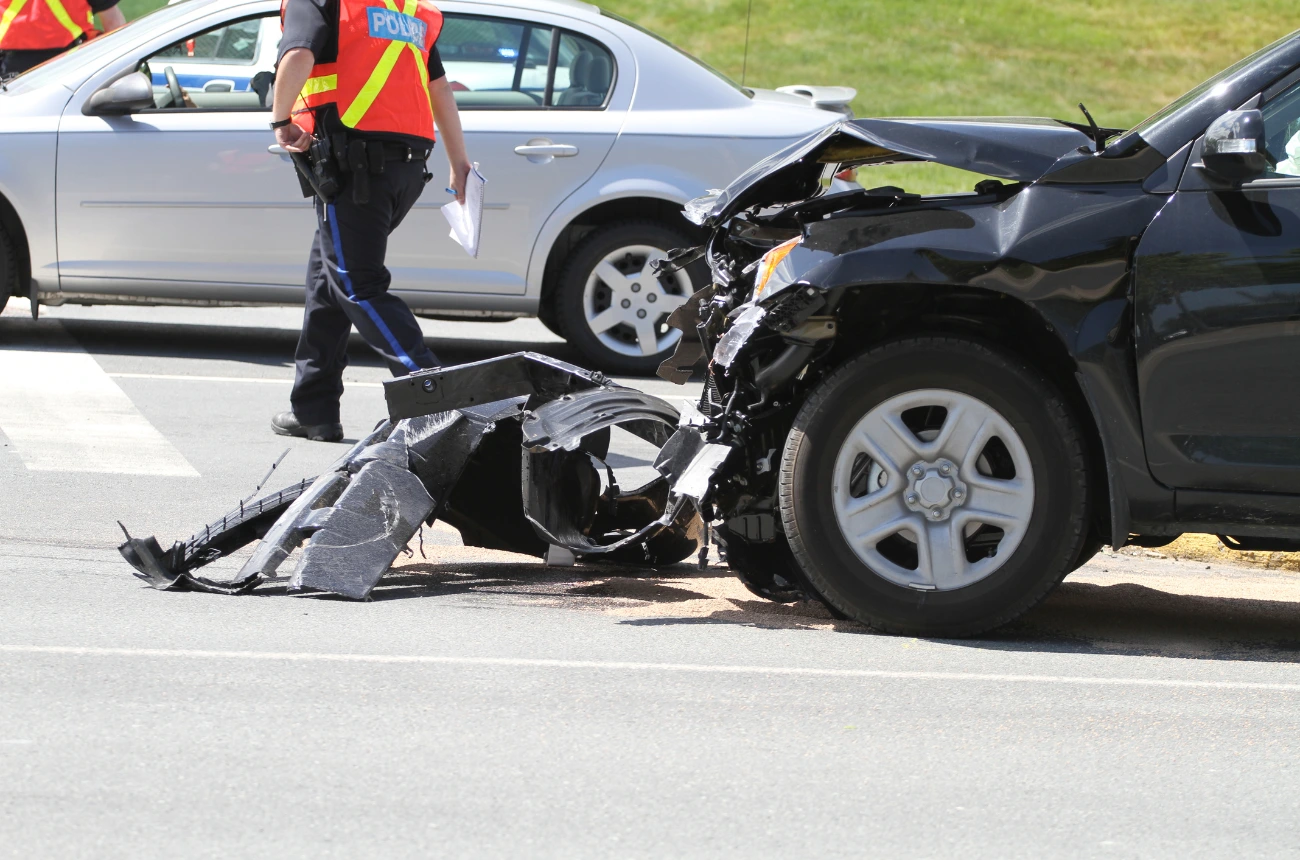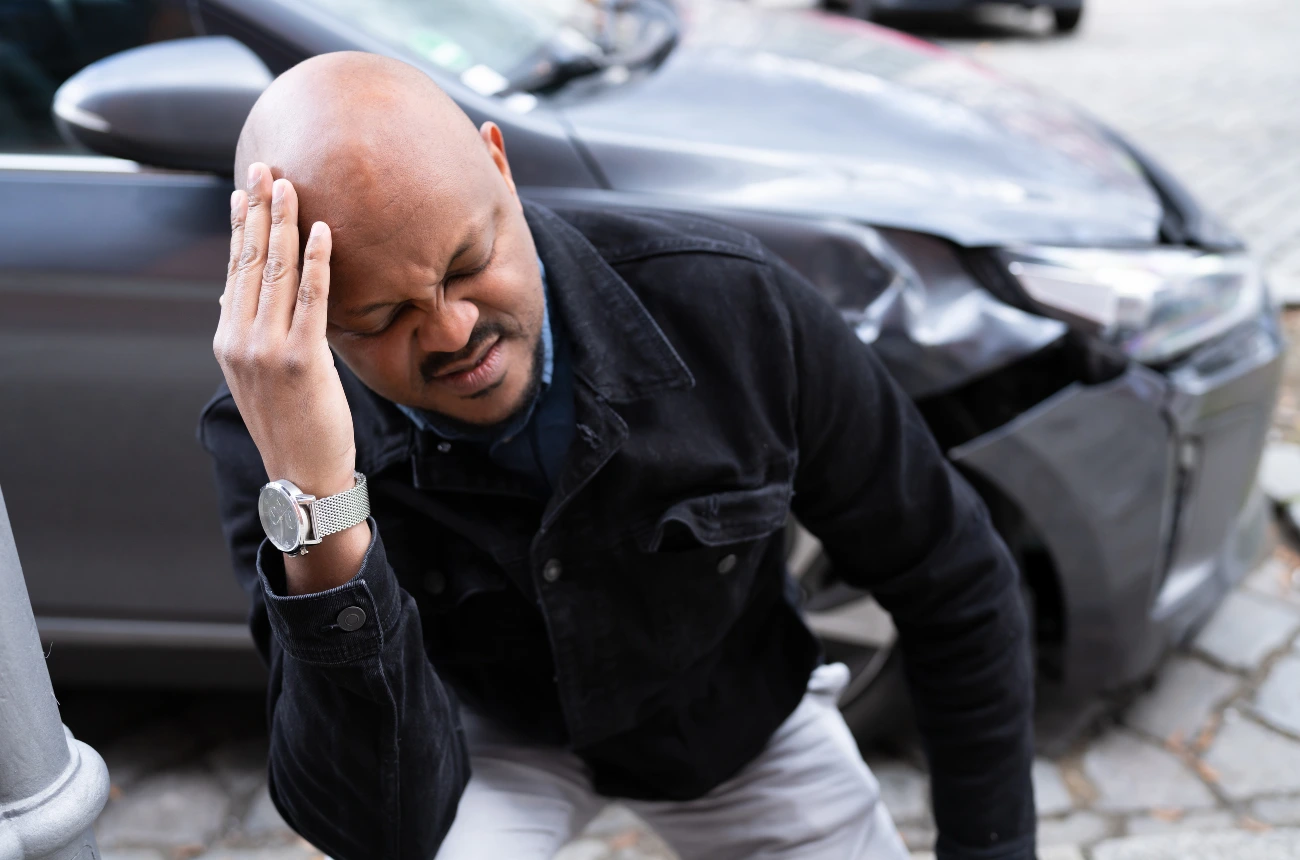Your financial recovery after a car accident in Texas hinges on one key question:
How do adjusters determine who is at fault?
Texas’ at-fault system and the 51% rule mean that even small mistakes in handling your claim can cost you thousands.
In this article, we explain how claims adjusters review evidence, apply traffic rules, and use tactics that can lower your payout.
We’ll also show how a personal injury lawyer at No Bull Law can help you challenge biased fault assignments and protect your rights in your car accident case.
After a car accident in Texas, insurance adjusters review all the evidence to decide who is at fault and how much fault each party has. They examine the accident scene, study the police report, and assess vehicle damage.
Applying Texas law and the comparative fault rule (aka the 51% rule), they make a fault determination that directly impacts your car accident claim and the compensation you may receive for:
- Personal injury treatment costs
- Property damage
- Work injury losses (if your ability to work is affected)
- Other economic and non-economic damages, and
- Wrongful death claims in some cases
Here’s how the process works:
Step 1: Evaluating the Evidence
- Police Reports: After an auto accident, officers document the scene by noting the location, time, involved parties, and any traffic violations. These reports provide an initial account that can greatly influence an adjuster’s decision.
- Vehicle Damage: The location and extent of damage can help reconstruct the accident. For example, rear-end collisions often indicate the driver behind was at fault, while side-impact damage might suggest unsafe lane changes. In a truck accident case, claims adjusters also look at the unique damage patterns and weight distribution to determine fault.
- Photos and Videos of Injuries: Visual evidence of injuries can support claims about the severity of the accident. Adjusters will look for consistency between the injuries and the reported cause of the accident.
- Dashcam/Surveillance Footage: Dashcams or nearby cameras offer an objective view of the accident, capturing actions like sudden stops, lane changes, and traffic law adherence.
- Witness Statements: Statements from bystanders or other drivers can offer additional perspectives on the accident. Adjusters will consider these accounts to corroborate or challenge the parties’ versions of events.
- Traffic Citations for Moving Violations: If one driver received a citation for a moving violation, it can be a strong indicator of fault. For example, a citation for running a red light or speeding can significantly impact the adjuster’s decision.
Step 2: Applying Texas Traffic Laws
After reviewing the evidence, adjusters use Texas traffic laws to assign fault.
These are some examples of laws that commonly apply to car accident cases in Texas:
- Right of Way (Texas Transportation Code § 545.151): Failing to yield at intersections or pedestrian crossings can lead to a crash. If you’re found ignoring the right-of-way rules, adjusters may assign you fault.
- Speeding (Texas Transportation Code § 545.351): Exceeding the posted speed limit, even slightly, is viewed as negligence. Speeding can increase both the risk and severity of an accident.
- Tailgating (Texas Transportation Code § 545.062): Following too closely reduces your reaction time. If you tailgate, adjusters may argue that you caused a rear-end collision.
- Reckless Driving (Texas Transportation Code § 545.401): Aggressive maneuvers—such as weaving in traffic—are classified as reckless driving. This behavior is a major factor in many crash claims.
- Obeying Traffic Signals (Texas Transportation Code § 472.022): Disregarding red lights or stop signs can cause dangerous collisions. Running a traffic signal is a clear violation that often results in assigned fault.
- Driving While Intoxicated (Texas Penal Code § 49.04): Operating a vehicle under the influence impairs your judgment severely. This dangerous act is almost always deemed responsible for causing a crash.
- Texting While Driving (Texas Transportation Code § 545.4251): If your phone records show you were texting before the accident, adjusters will argue your distraction directly caused the collision, even if you braked in time.
In Texas, adjusters use the modified comparative negligence rule to determine car accident fault and compensation.
Here’s how it works:
- If you’re found 50% or less at fault, you can still recover damages, but your compensation will be reduced by your percentage of fault. For example, if you’re 20% at fault for an accident with $50,000 in damages, you’d receive $40,000.
- If you’re found 51% or more at fault, you cannot recover any damages. This rule ensures that only those less at fault than the other party can seek compensation.
- Potential Exception: For example, in drunk driving accidents, Texas courts may ignore the 51% rule. Even if you were 40% at fault (e.g., rolling a stop sign), a drunk driver’s gross negligence could make them 100% liable in a jury’s eyes.
Insurance adjusters don’t always play fair. They may try to inflate your percentage of fault to push you over the 51% threshold.
If they succeed, you lose all compensation. This is why having a personal injury attorney who can counter these tactics is crucial.
Attorneys at No Bull Law have years of experience using proven legal strategies to fight for the maximum compensation you deserve.
How Adjusters Tie Laws to Fault: A Real-Life Example
A common type of accident in Texas is the rear-end collision, where fault isn’t always straightforward.
What the adjuster looks at:
- Police report – Did an officer cite anyone for unsafe driving?
- Vehicle damage – Where was the impact?
- Traffic laws – E.g., did any driver violate §545.060 (Unsafe Lane Changes)?
- Evidence — Photos from the scene, dashcam or surveillance footage, witness statements, etc.
The adjuster may find that:
- Driver A suddenly merged into the right lane without signaling, causing Driver B to rear-end them.
- Driver B, who was following too closely, was unable to stop in time.
- The police officer issued a citation to Driver A for failing to signal before merging, in violation of §545.060 (Unsafe Lane Changes).
- The vehicle damage shows that Driver B’s front bumper is damaged, while Driver A’s rear bumper is also damaged.
- Dashcam footage shows that Driver B was tailgating.
Accordingly, here’s how the adjuster may assign fault:
Adjusters review the evidence against §545.060 (Unsafe Lane Changes). If Driver A failed to signal before merging, causing Driver B to rear-end them:
- Driver A could be 60% at fault for improper merging.
- Driver B could be 40% at fault for tailgating.
Under Texas’ 51% Rule, Driver B (40% at fault) can recover damages, but Driver A (60% at fault) cannot because they are more than 51% at fault.
If Driver B’s total damages were $30,000, they would receive $18,000 after their 40% fault is deducted.
Remember how insurance adjusters don’t always assess fault fairly and may deliberately undermine you?
Insurance adjusters work for the insurance company, not for you. In car accidents, they often try to cut costs using various tactics. Knowing these strategies helps you see when they’re not working in your favor.
1. Blaming You for “Failure to Avoid” the Accident
Adjusters may argue that the accident victim could have avoided the accident by reacting faster or differently.
However, Texas law does not require drivers to anticipate others’ negligence, such as sudden lane swerves or illegal U-turns.
2. Using Recorded Statements Against You
One of the first things an adjuster may ask for is a recorded statement. Although their questions might seem routine, they are designed to trap you into admitting partial fault.
For instance, they might ask, “Do you think you could’ve braked sooner?” Even a simple “yes” can be twisted to imply shared fault.
3. Delaying Claims to Pressure Settlements
Insurance companies are aware that victims of car accidents often face financial strain. To pressure you into accepting a lowball offer, some adjusters may intentionally slow down the claims process, leaving you waiting weeks or even months for updates.
However, under Texas law (Texas Insurance Code §542.056), insurers are required to respond within 15 days of receiving proof of your claim.
4. Offering Quick, Low Settlements
Right after an accident, an adjuster may offer you a fast settlement before you fully understand your medical expenses and long-term recovery needs.
This is a deliberate attempt to close your claim for as little as possible before you realize the true value of your personal injury case.
So, how do you counter these tactics and ensure you receive the compensation you deserve?
That’s where No Bull Law’s attorneys step in.
Insurance adjusters may try to assign unfair fault percentages or downplay your injuries, but you don’t have to fight them alone.
Here’s how a trusted car accident lawyer from No Bull Law can protect your rights:
- Debunk “Failure to Avoid” Accusations: We’ll gather evidence to show that the other driver’s actions were the primary cause of the accident.
- Prevent Misuse of Recorded Statements: We’ll handle all communications with insurers to ensure your words aren’t twisted against you.
- Push Back on Claim Delays: We’ll enforce Texas’ strict timelines to ensure your car accident claim moves forward promptly.
- Challenge Unfair Fault Assignments: We’ll use expert testimony, photos, and legal arguments to counter biased fault percentages.
- Maximize Your Payout: We’ll negotiate aggressively to recover the full compensation you deserve, not just what the insurer offers. In a catastrophic injury case, such as paralysis or severe brain trauma, we ensure you receive compensation for long-term medical needs and rehabilitation.
- Take Legal Action if Needed: If the insurer refuses to negotiate fairly, we’ll take your case to court and fight for justice.
Now that you understand how adjusters try to reduce your claim, let’s look at how legal expertise can turn the tables.
How a No Bull Law Attorney Can Use Texas Laws to Challenge Adjuster Arguments
Insurance adjusters often overlook or misinterpret Texas laws to reduce your payout.
That’s why having an experienced car accident attorney from No Bull Law handle your claim is critical. Our attorneys are well-versed in Texas’ legal system and know how to leverage state laws to challenge unfair claims adjuster arguments.
Here’s how we do it:
Scenario 1: Adjusters Blame You for Speeding in Construction Zones
Let’s say construction signs are missing, faded, or improperly placed, and adjusters blame the accident victim for speeding.
Under the Texas Tort Claims Act (TTCA), cities or contractors can be held liable for a construction accident caused by inadequate signage. In City of Dallas v. Mitchell (1997), the court ruled that poor signage can shift liability away from drivers.
How We Fight Back: We hold the responsible party accountable, ensuring you don’t pay for their negligence.
Scenario 2: Adjusters Assign 50/50 Fault in Parking Lot Accidents
In parking lot accidents, adjusters often say both drivers were simply “maneuvering” and assign equal fault.
However, Texas law prioritizes the right-of-way, and a driver backing out is usually at fault unless the other car was speeding.
How we fight back: If you had the legal right-of-way, we challenge these unfair fault assignments to secure the compensation you deserve.
Scenario 3: Adjusters Downplay Your Injuries Due to Pre-Existing Conditions
Adjusters may argue that your pre-existing condition, like an old back injury, was not aggravated by the auto accident and shouldn’t be included in your claim.
Yet, the Eggshell Plaintiff Rule in Texas ensures that the at-fault driver is fully liable for all harm caused by their actions, even if you had a prior condition.
How we fight back: If the accident worsened a pre-existing condition, we push back against attempts to downplay your damages and fight for full compensation under Texas law.
3 FAQs Related to Fault Assignment in Texas
Have more questions about fault assignment after a Texas car accident?
Let’s answer them.
1. Can a Passenger’s Testimony Overrule the Police Report?
A passenger’s testimony does not automatically override a police report, but it can help challenge inaccuracies in the report.
Police reports document an officer’s findings at the scene, but they are not the final word on fault, especially if the officer did not witness the accident firsthand.
A passenger’s account is considered eyewitness evidence and can support or contradict the report.
Ultimately, an adjuster, judge or jury (if the case goes to trial) looks at all the evidence to decide who is at fault. That’s why working with a skilled car accident lawyer is important. They can help you gather and present the right evidence to support your case.
2. What if the Adjuster Claims ‘Low Impact = No Injury’?
Even if your car shows little damage, a low-speed crash can still cause serious injuries. Insurance adjusters sometimes claim that “low impact equals no injury.”
However, even accidents at 5–10 mph can result in whiplash, concussions, or spinal damage. Your injuries may not be obvious right away or worsen over time.
Similar misconceptions can occur in a pedestrian accident or a slip-and-fall accident, where the true extent of injuries is often underestimated.
So, getting a thorough medical evaluation after any accident—even a seemingly minor one—is essential to document any injuries that may develop later.
3. What Should I Avoid Saying to a Claims Adjuster After a Car Accident?
After a car accident, be cautious about what you say to an insurance adjuster.
Avoid phrases like “I’m sorry” or “I’m okay,” as they can be misconstrued as admitting fault or downplaying injuries.
Stick to basic facts about the accident scene—date, time, location, and vehicles involved—and avoid speculating about speed, weather, or fault. For example, say, “The other driver ran a red light,” but don’t add, “I might’ve been slightly over the speed limit.”
Most importantly, consult a personal injury lawyer, and don’t give a recorded statement that can be twisted to imply negligence. A lawyer can guide you on what to say—or avoid saying—to protect your claim.
If you need help with your car accident case, No Bull Law can assist.
Our experienced team of personal injury lawyers can help you challenge biased car accident fault assignments and secure the compensation you deserve.
We review your bills, negotiate with insurers, and secure fair compensation so you don’t end up paying extra.
Contact No Bull Law today for a free case evaluation.

